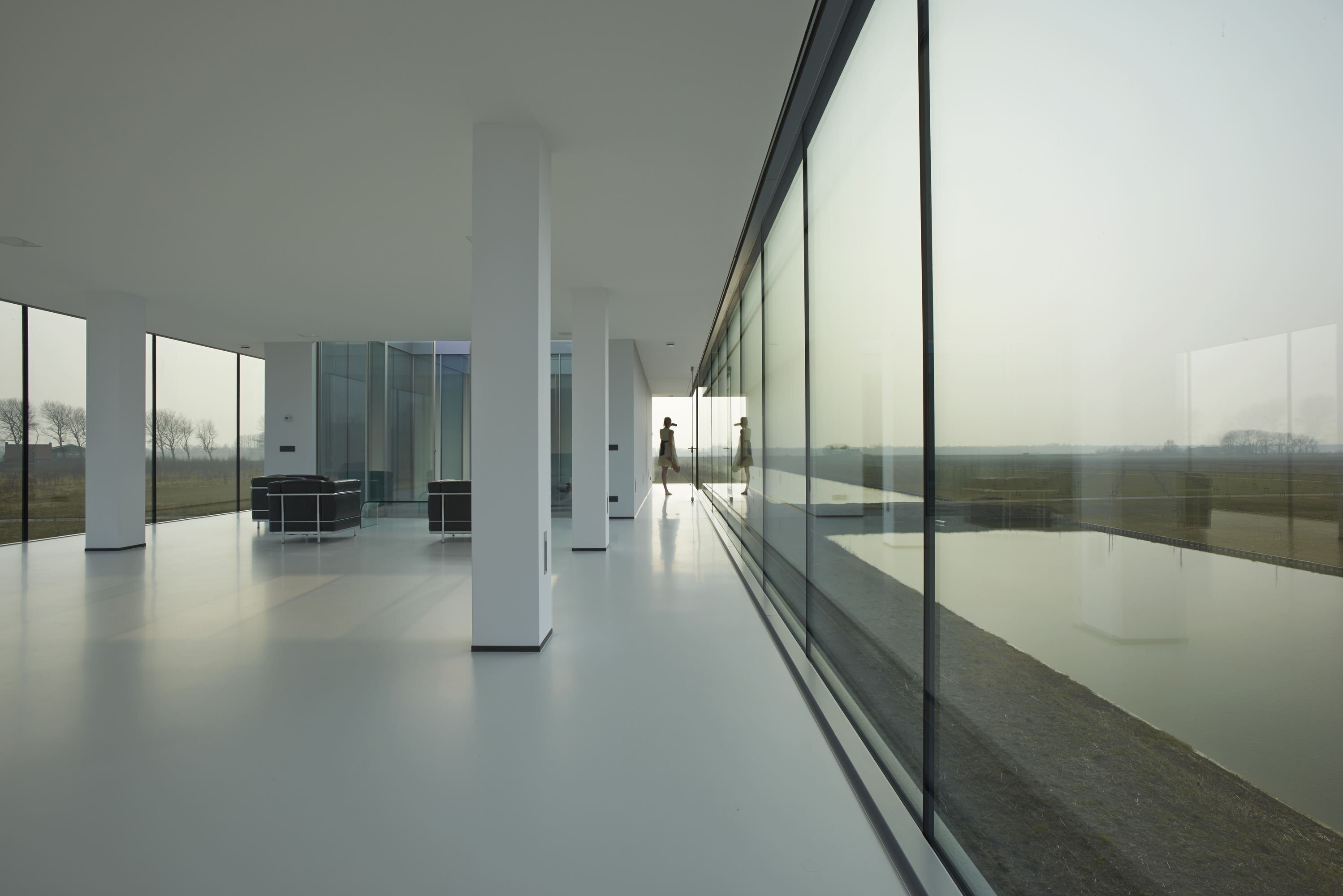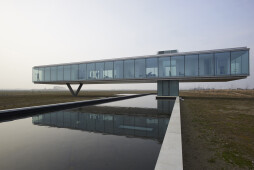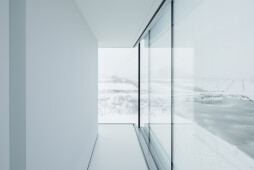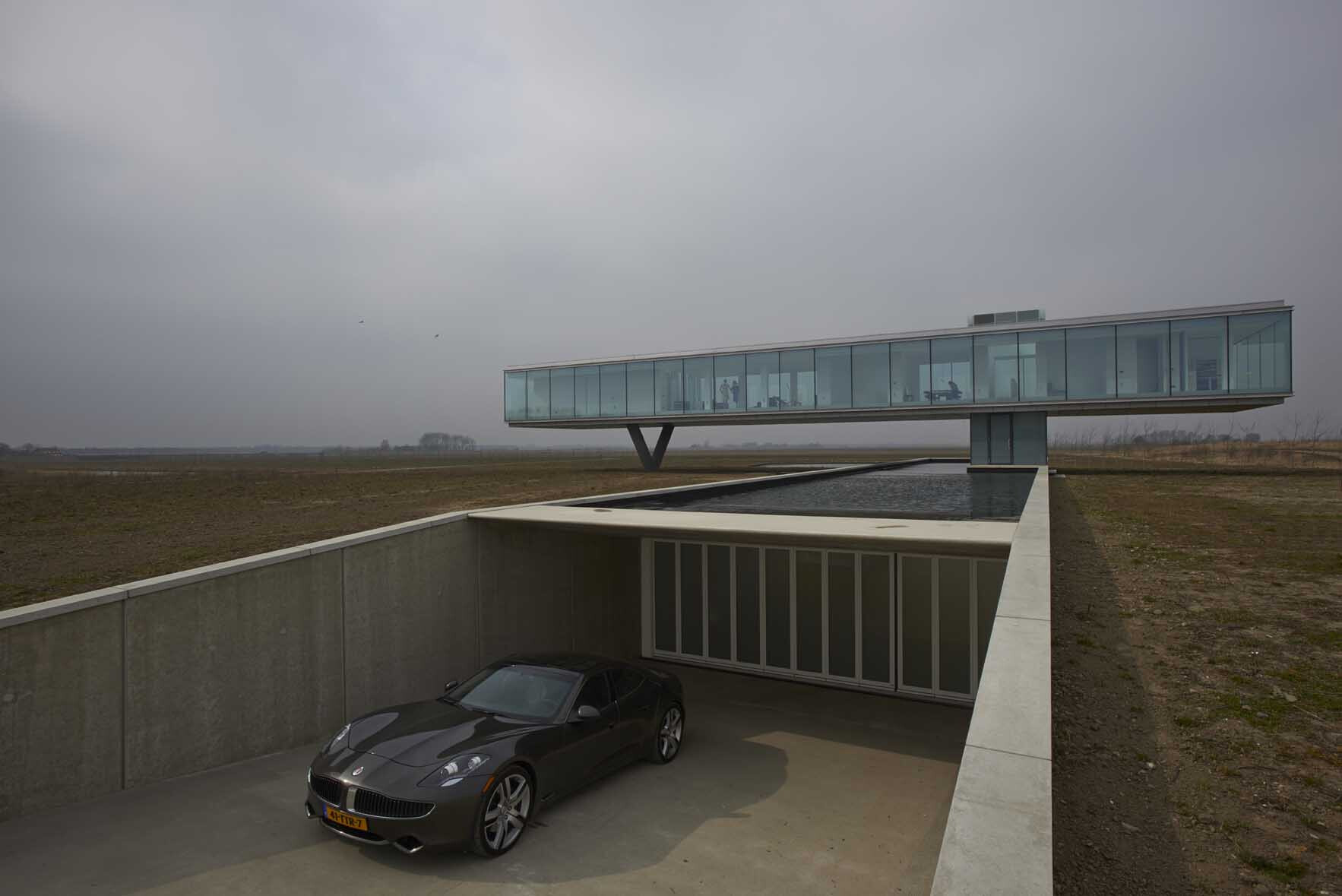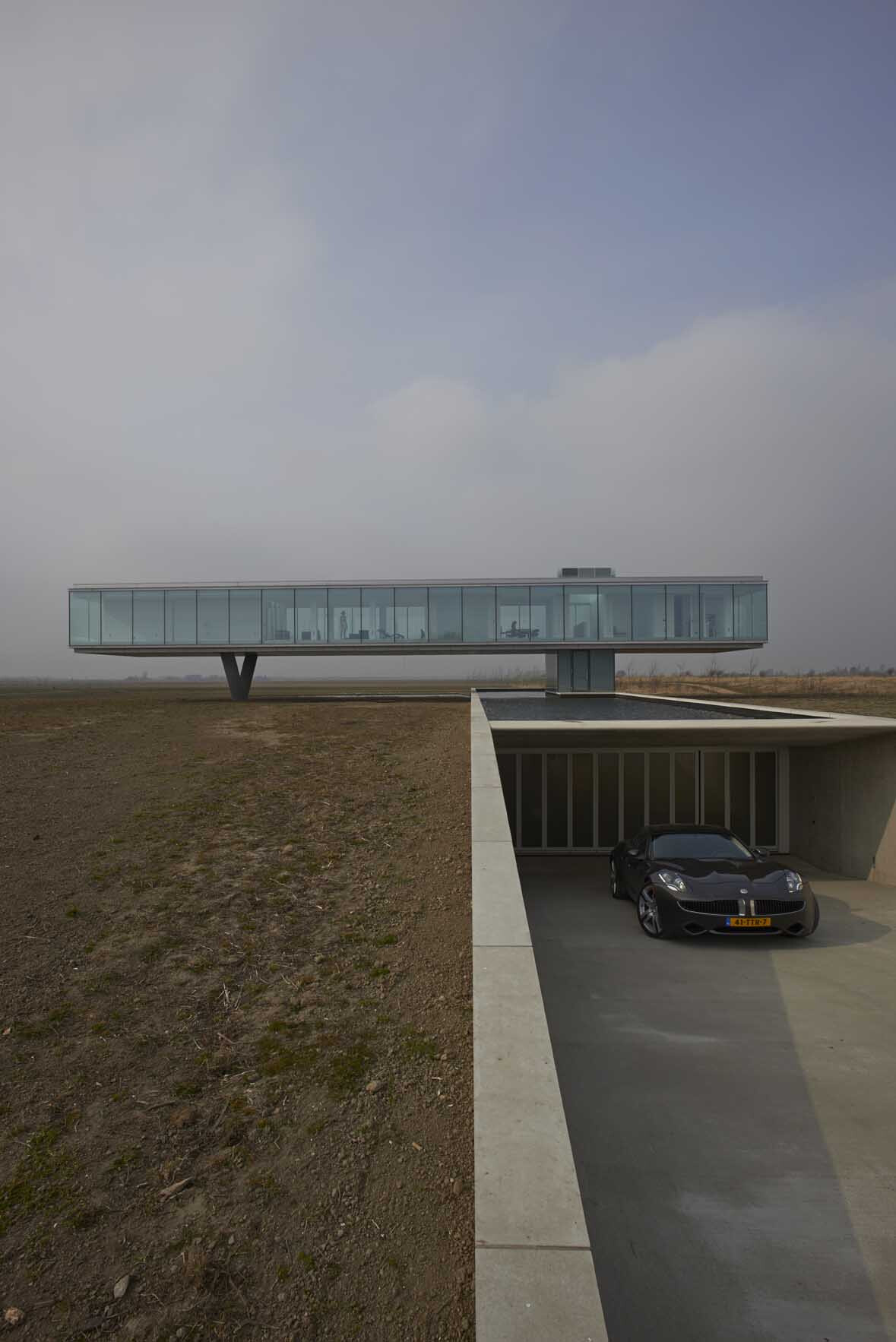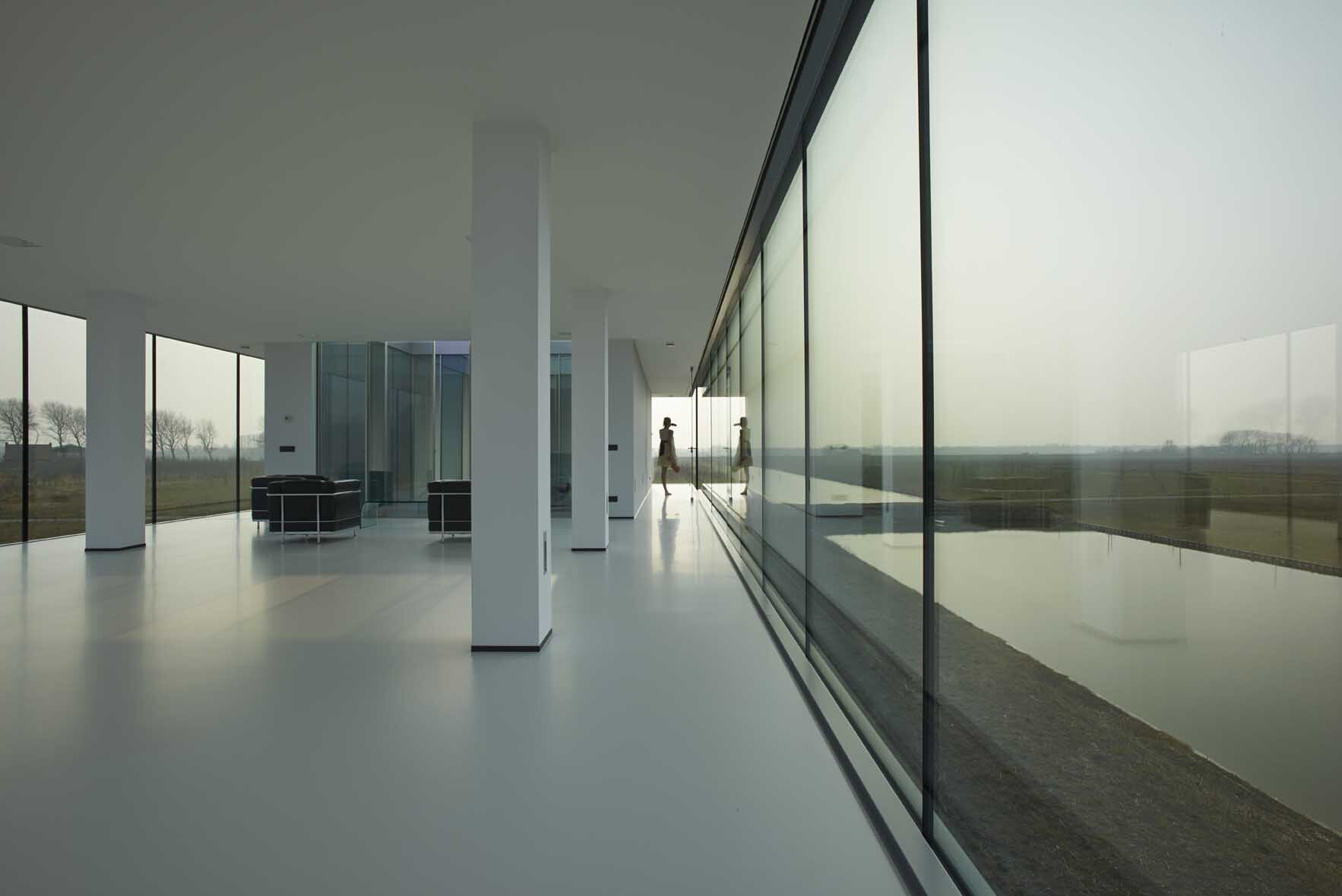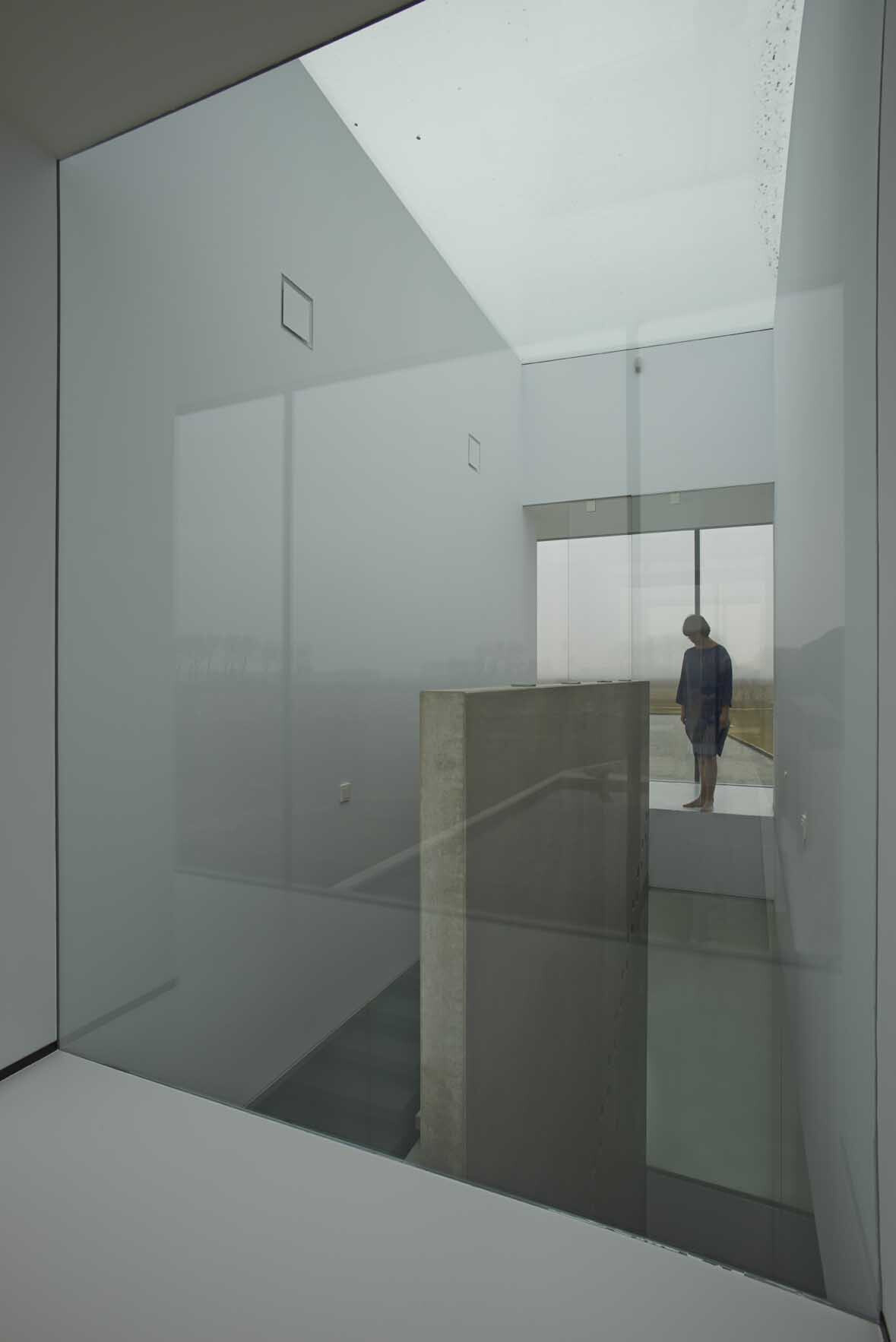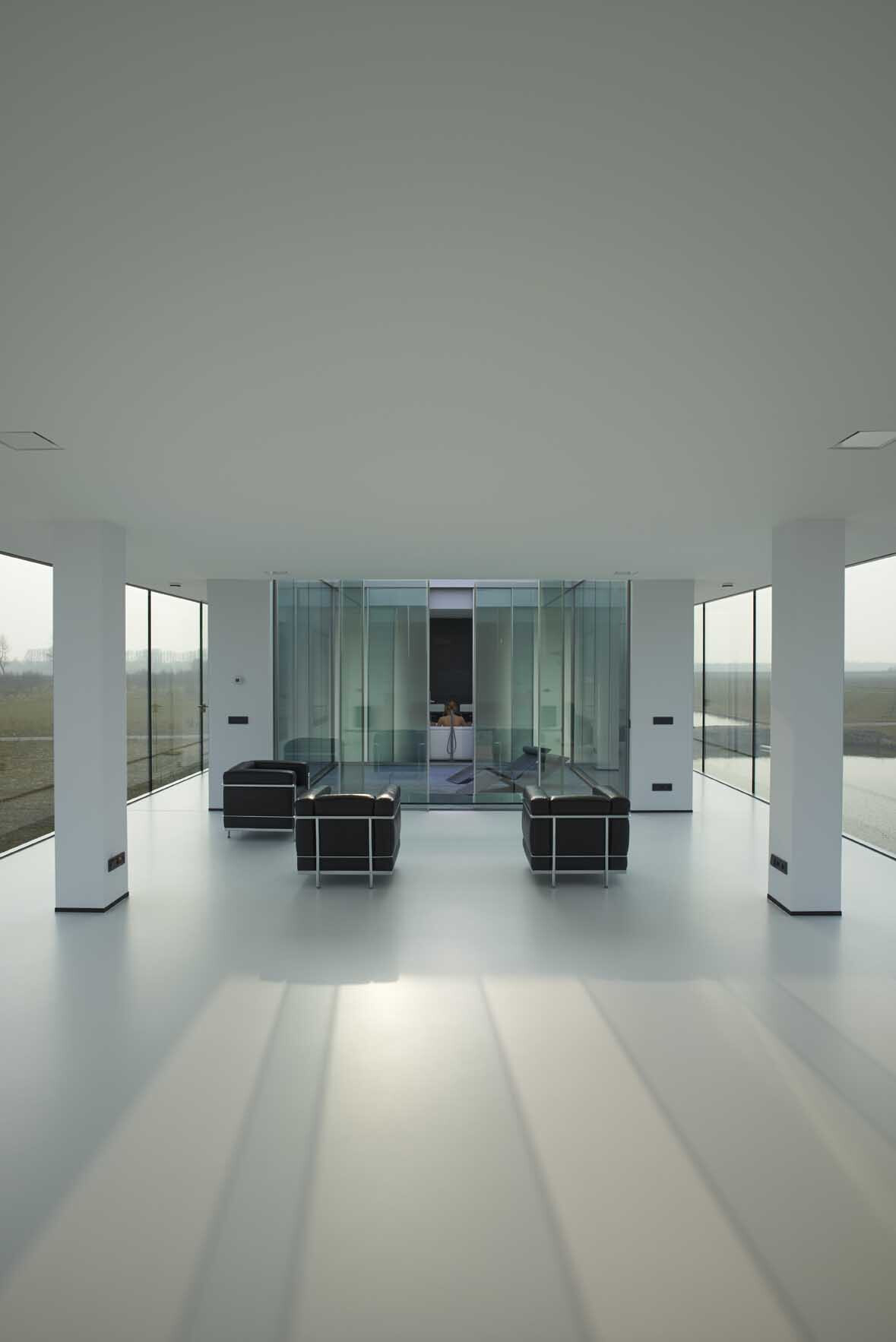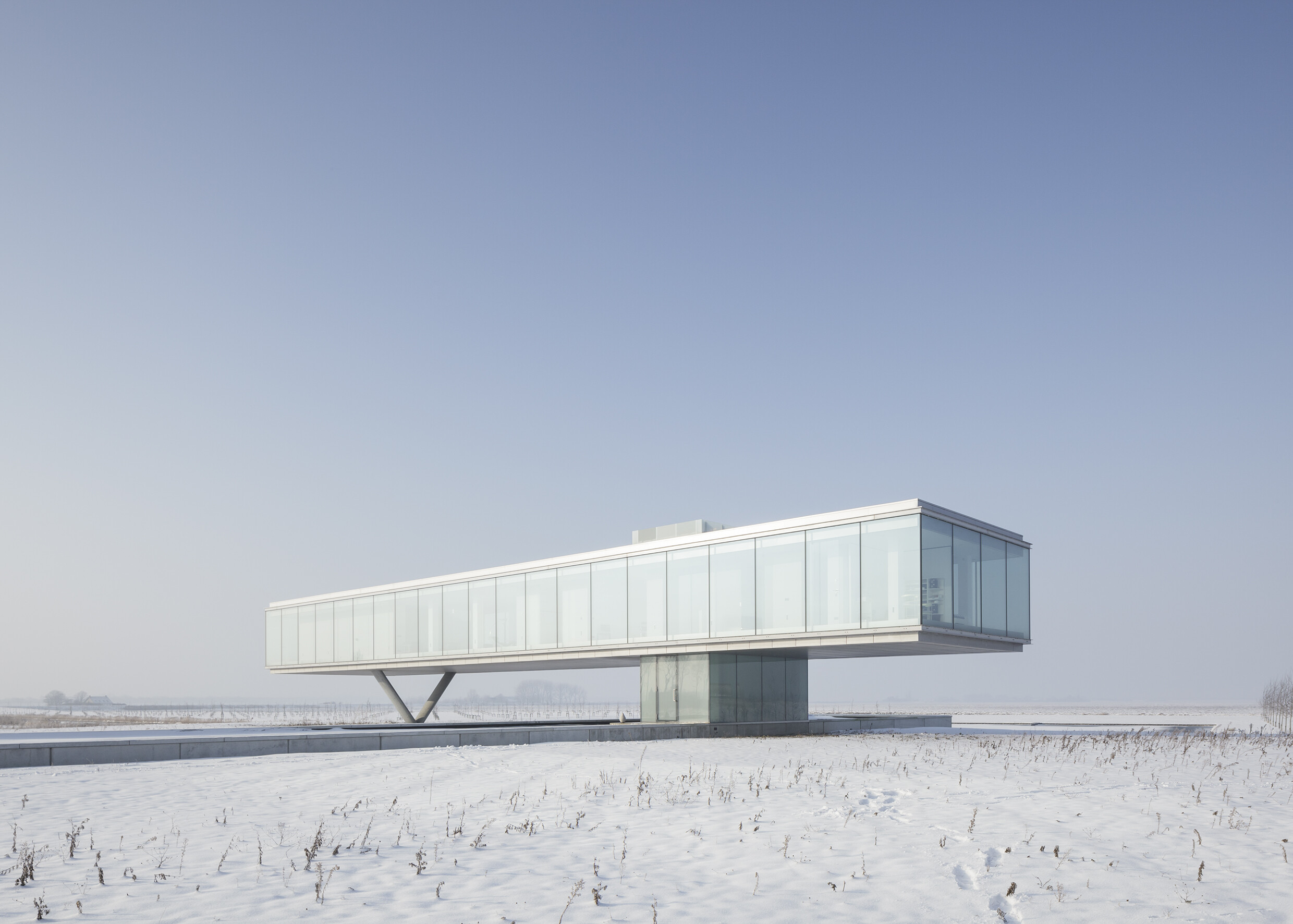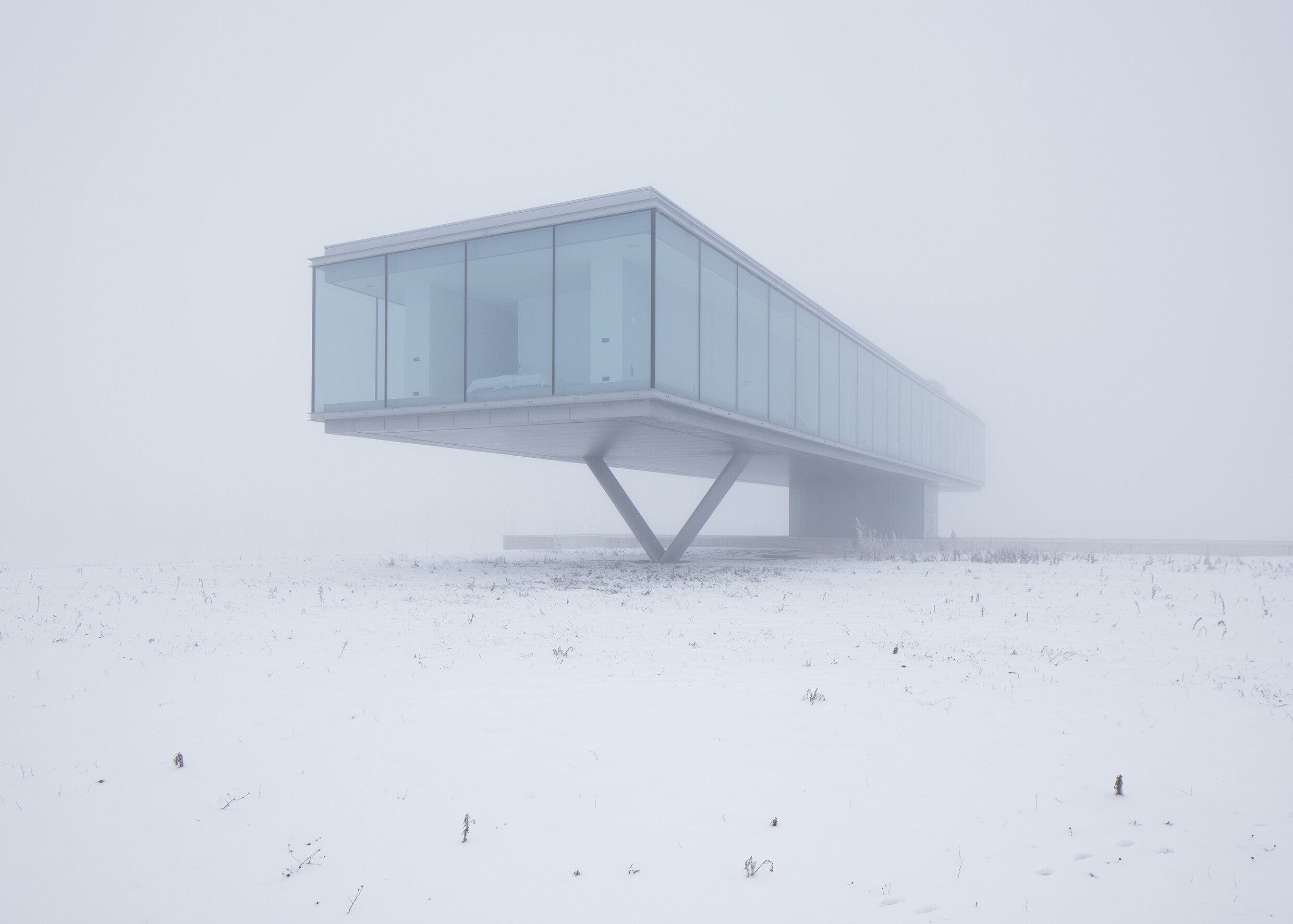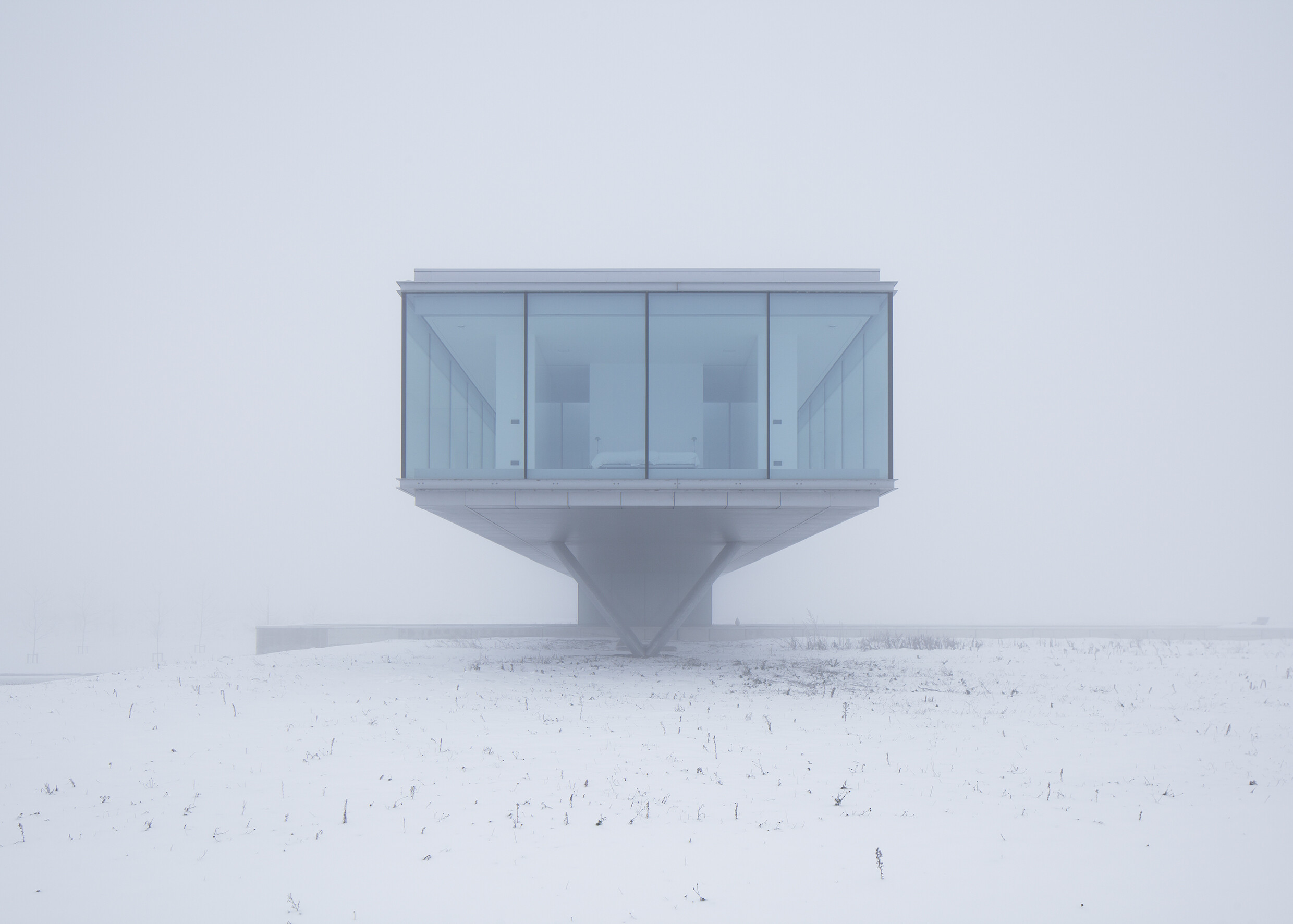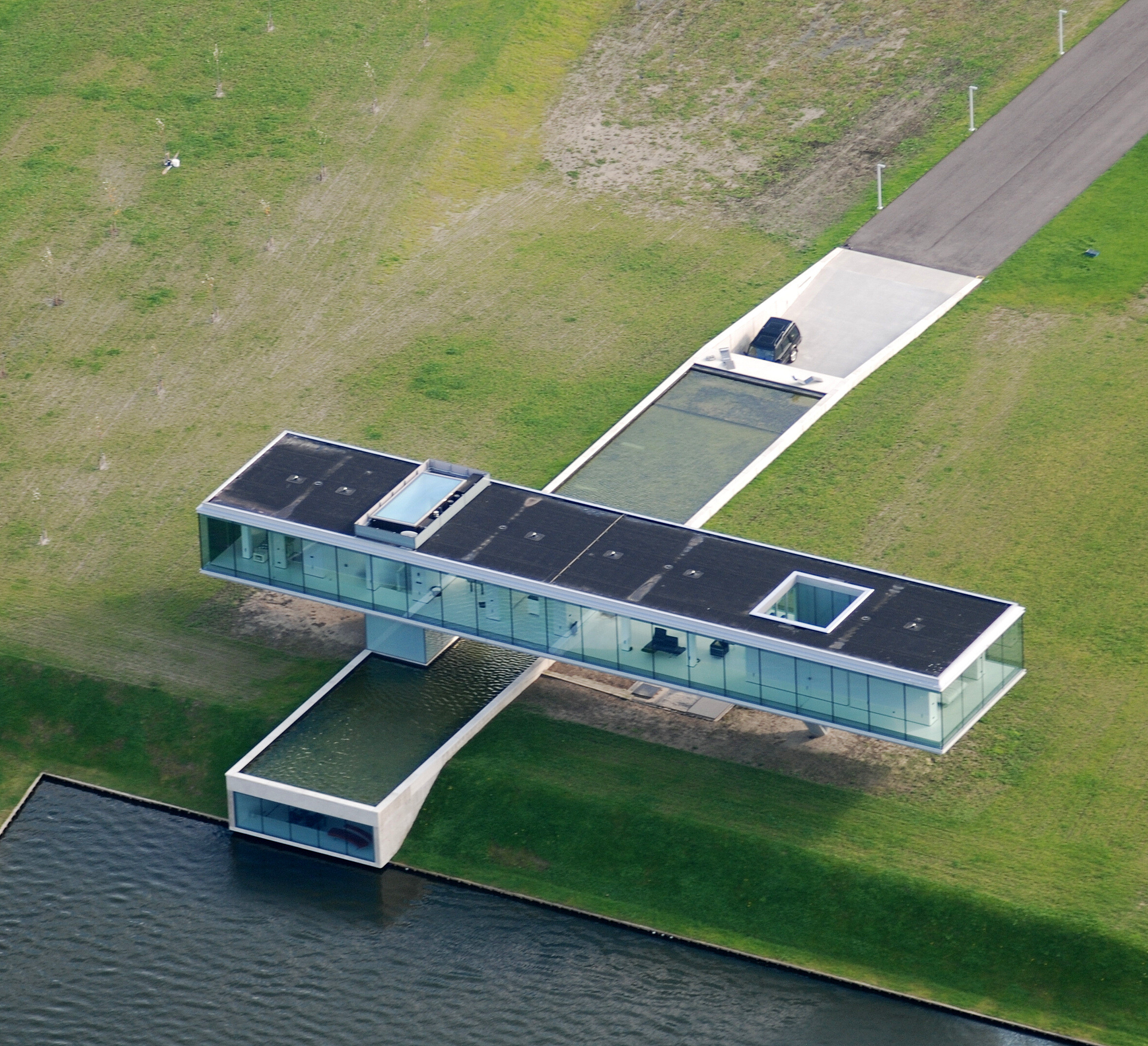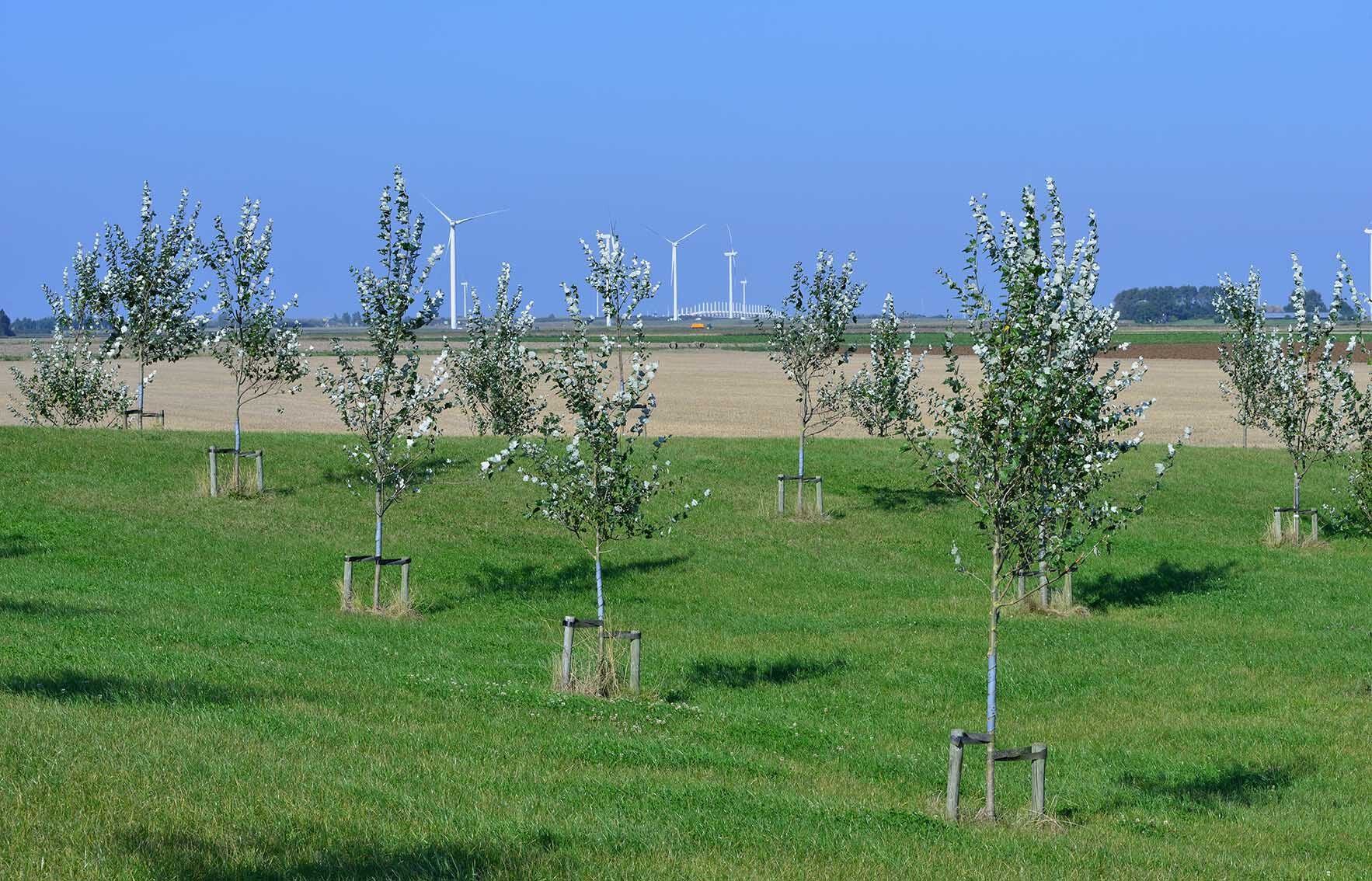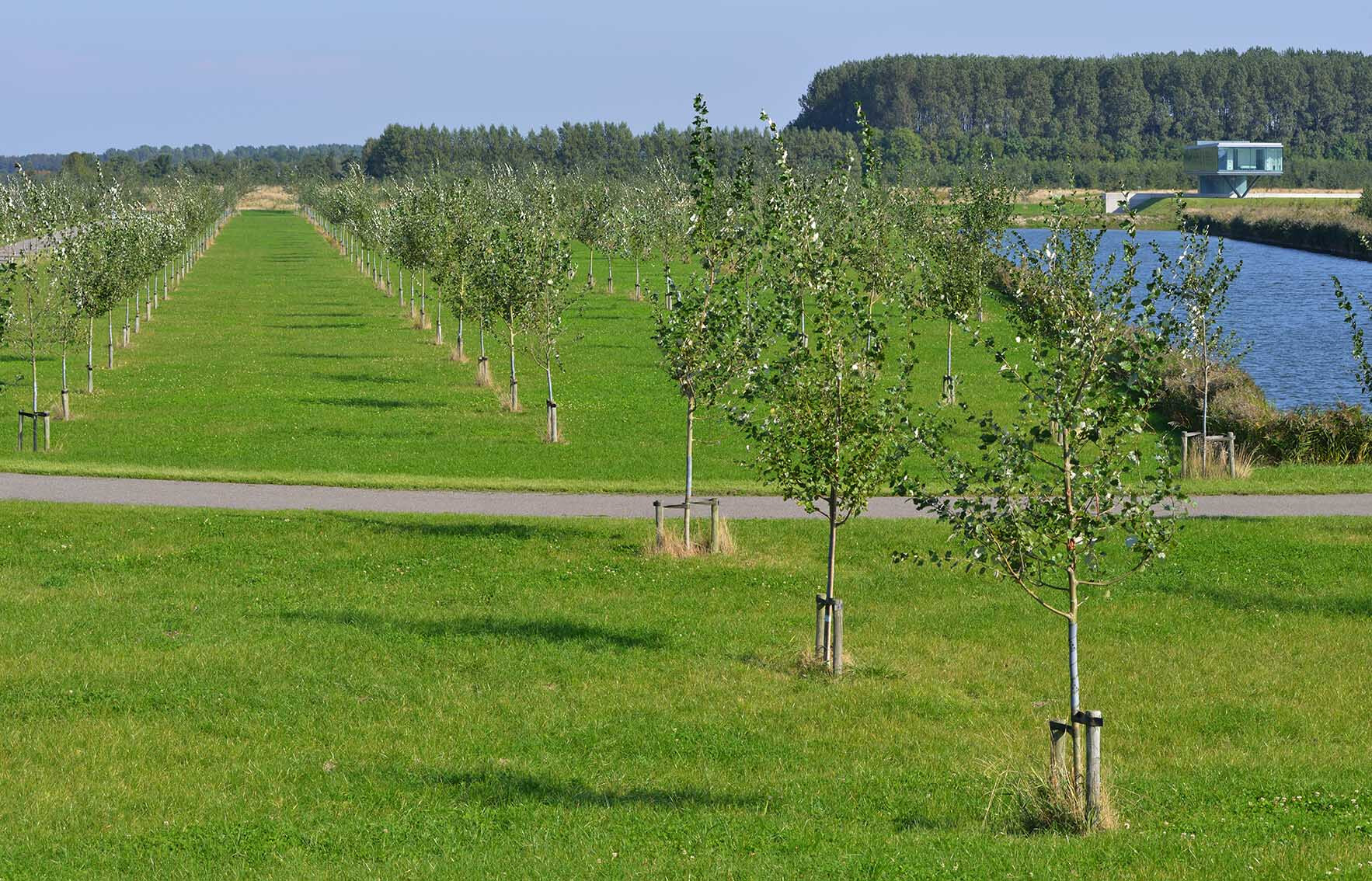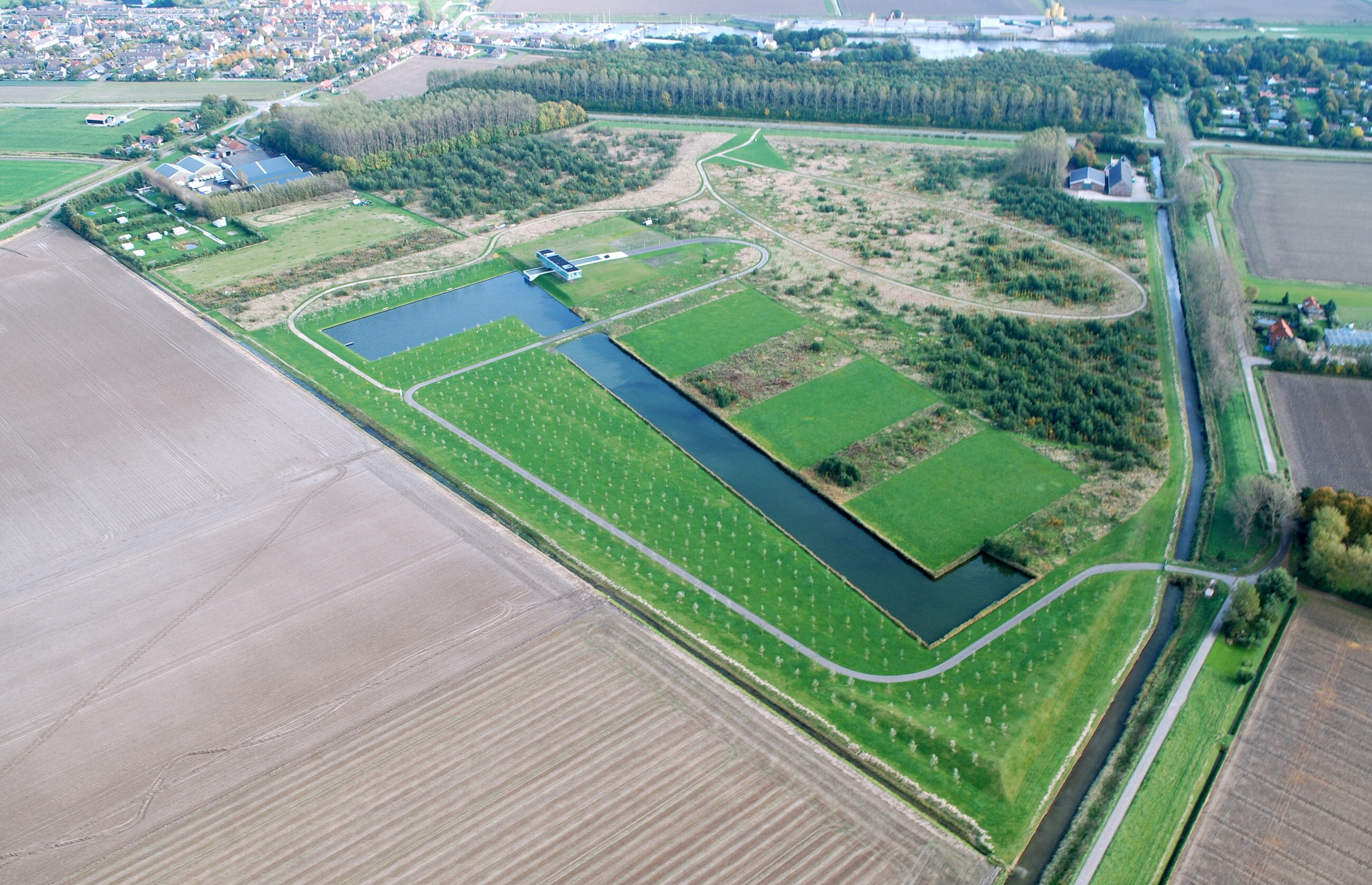This energy neutral structure is an unorthodox accommodation with an unique architecture.The design is a spartan interior coupled with a view of the stunning surrounding landscape of Zeeland. The underground volume consists of the entrance, parking, storage, bathroom and a workspace which looks out over the pond, while the living area is situated in the floating glass box above ground.
More from the architect:
During a festive award ceremony in Rotterdam (NL), Villa Kogelhof was awarded with the ARC13 Architecture prize. The award is given to projects wherein the usage and the technology are aligned in an innovative manner, aiming to strengthen sustainability as an integral part of architecture. Villa Kogelhof was nominated alongside 3 other projects out of a record number of 110 entries.
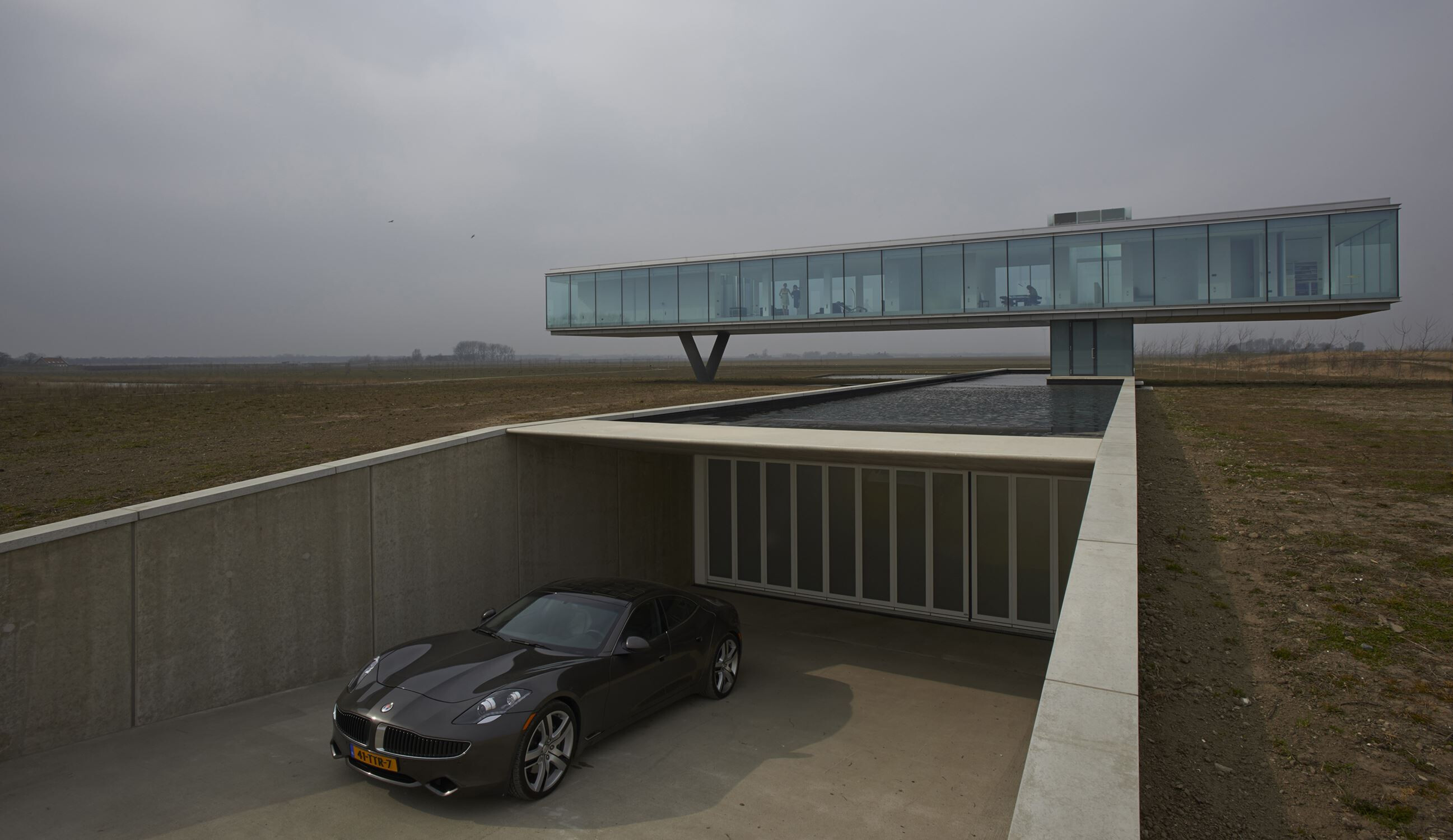
The jury report said: ‘Villa Kogelhof is the unorthodox accommodation for an ambitious client with an unique architecture. The uncompromising design is a spartan interior coupled with a view of the stunning surrounding landscape of Zeeland. In addition, the villa makes a statement within a world of sustainability which is usually associated with eco-conscious tree huggers: but why should sustainability be no Prada?’ The jury consisted of Don Murphy (VMX architects, chairman of the jury), Marjolein van Eig (Inbo), Tracy Metz (journalist and author), Bianca Seekles (ERA Contour) and Harm Tilman (de Architect, secretary of the jury).
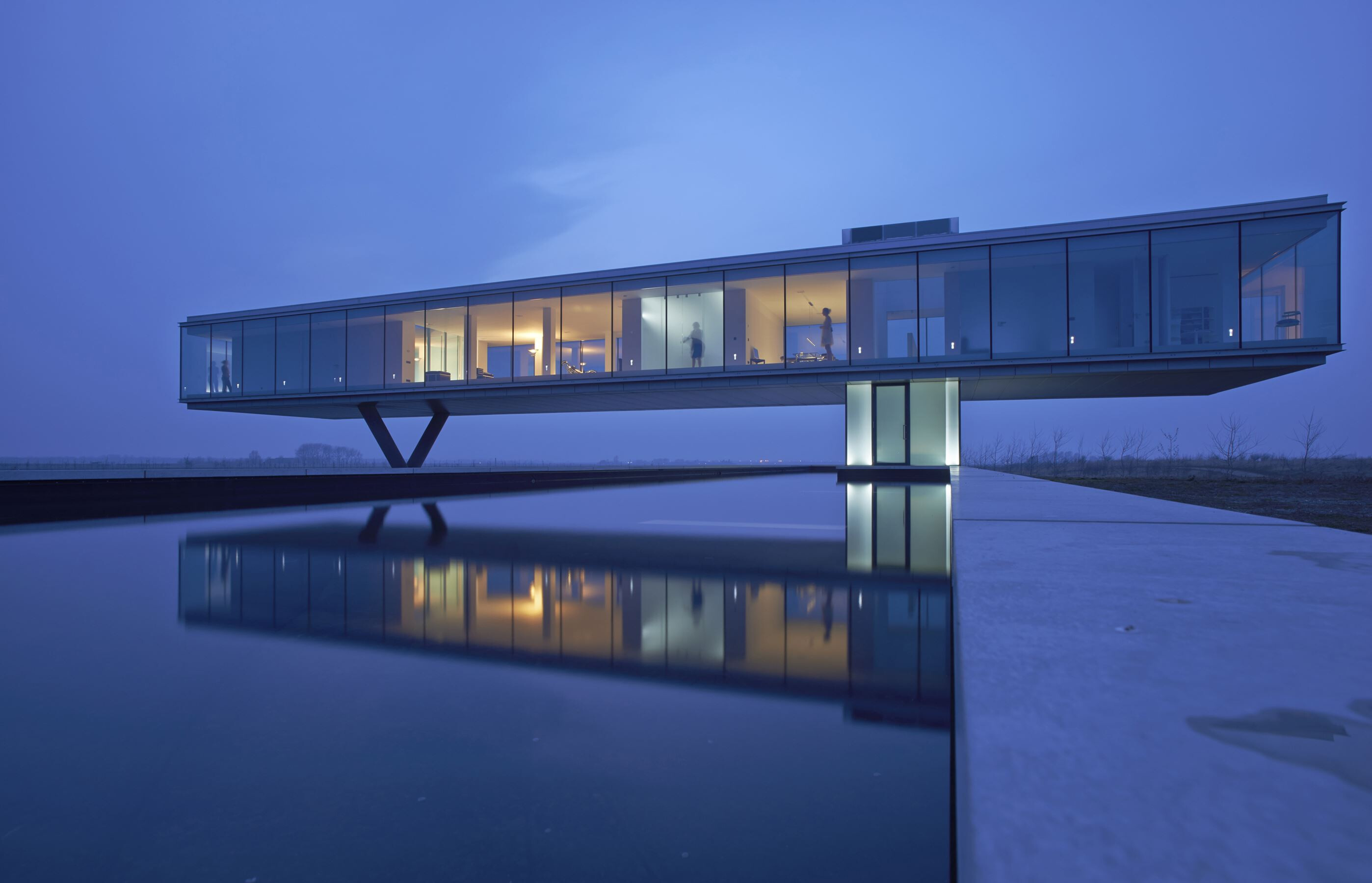
Ecology The 25 hectare estate is part of a larger program initiated by the government, which aims to connect regional ecological zones throughout the country. The current owner bought the site, once farmland, in 2006. It is a protected habitat for animals and plants and a major tourist draw in the area, open to the public. Permission to build a house on the land was given only on condition that it was returned to its pre-agricultural state. The planting of some 71,000 six-year-old trees hint at the future of the estate as ‘a villa in the woods’ and were planted already in 2006. A rectangular pond was digged, requiring the removal of 70,000 cubic metres of soil.
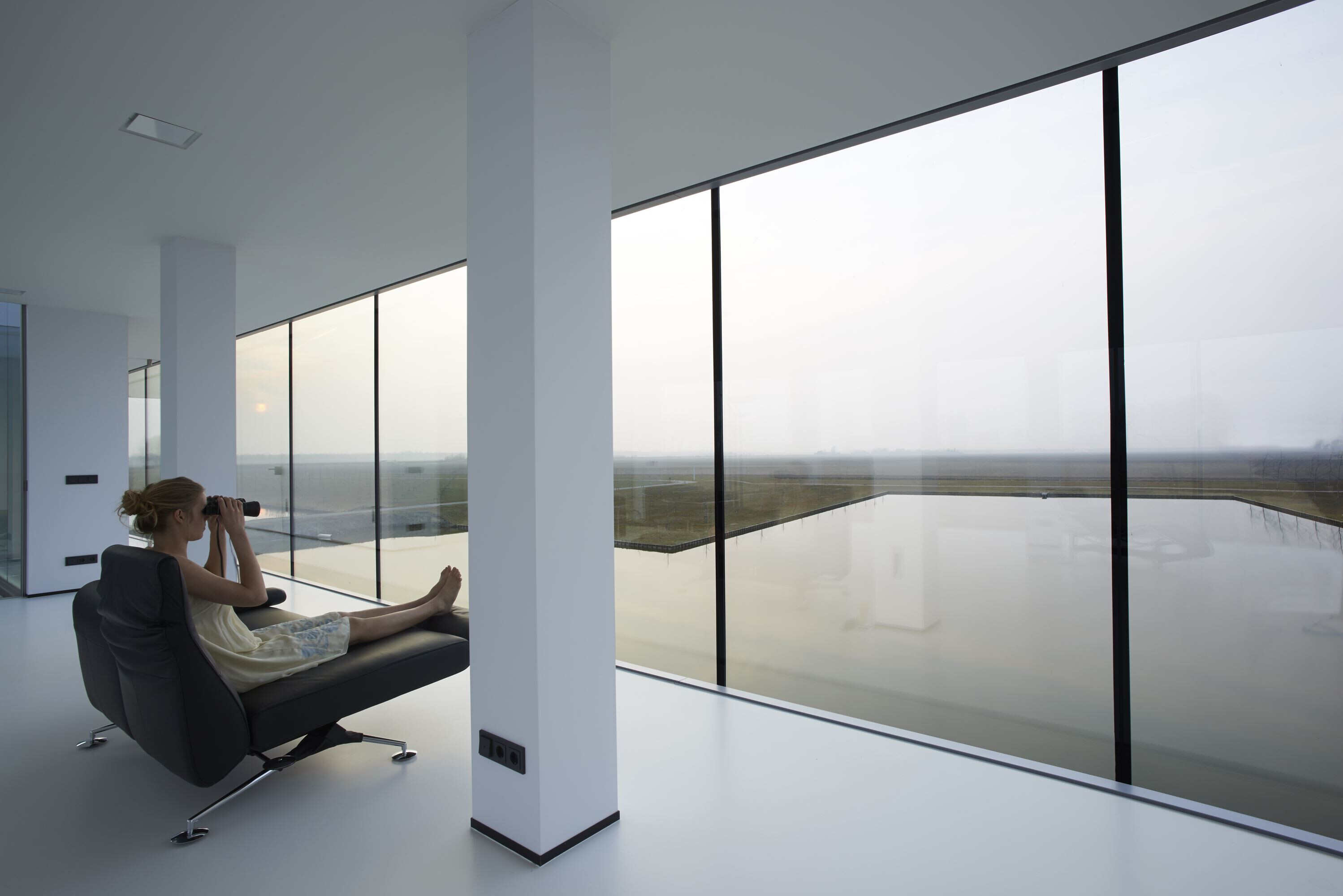
Contrast The underground volume of the house consists the entrance, parking (for 6 cars and a tractor), storage, bathroom and a workspace which looks out over the pond. The living area is situated in the floating glass box above ground. It’s floor plan is completely open, except for some subtle glass room dividers. There are several seperate volumes for the kitchen, bedrooms, bathroom and a multifunctional room. The patio has glass doors on both sides, so that it’s both accessible through the living room and the bathroom. The entire floor is covered with white epoxy and the furniture consists of desiger classics from Le Corbusier and Eileen Grey. The façade is completely made out of glass and offers a spectacular view over the surrounding landscape.
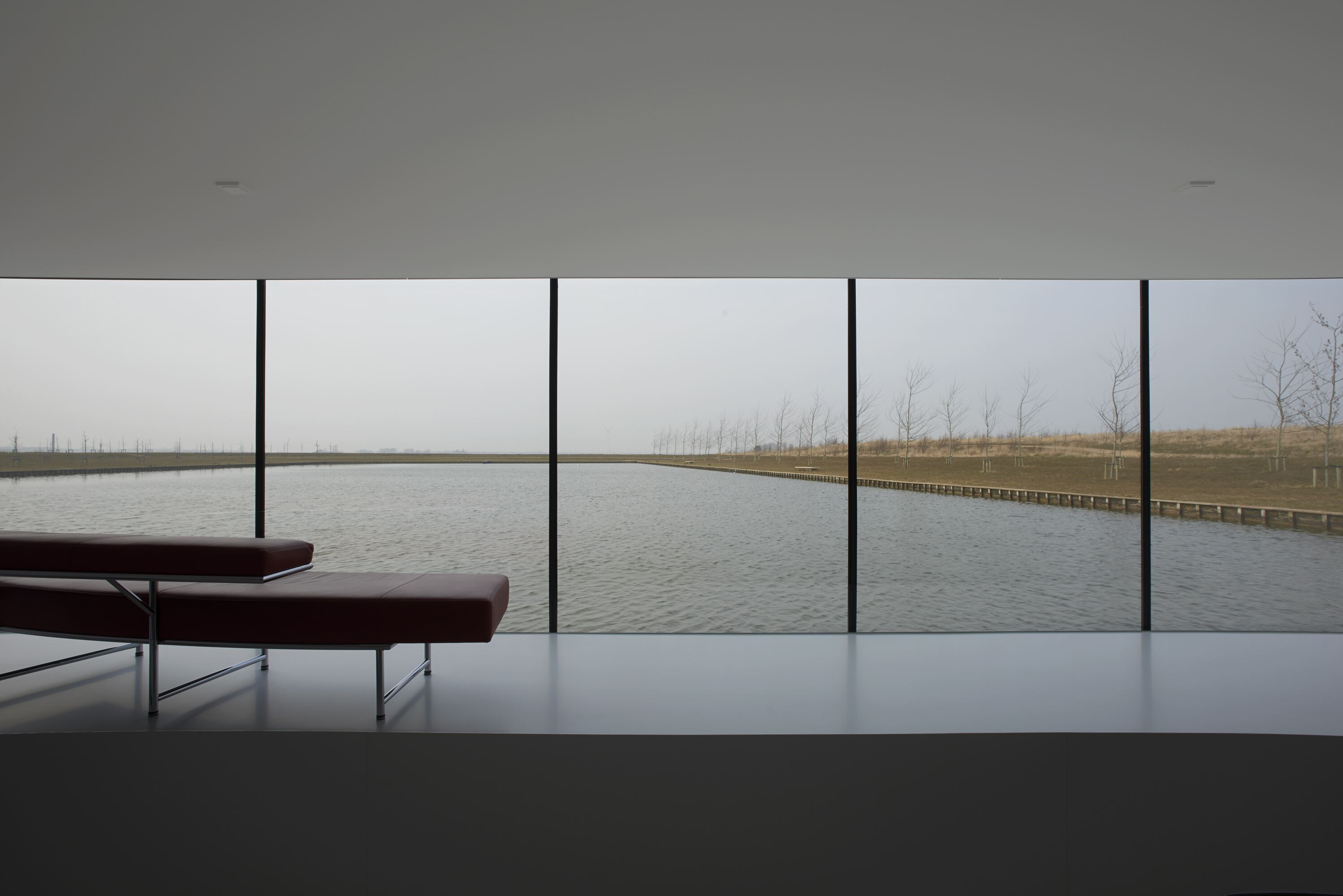
Self-sufficient One of the main principles of Villa Kogelhof was to translate luxury into the happiness of independence. The goal for the villa was to be self-sufficient; to generate its own energy, to heat its own water and to recycle the garbage. To make sure Villa Kogelhof is energy neutral, the façade offers an important contribution. This so called climate-façade is composed of an outer layer of clear insulated glass from floor to ceiling and an inner layer of sun-reflecting fabric that can be rolled up and unrolled. When the fabric is lowered, an air cavity is formed in which the air from the villa is extracted of a central ventilation system. The house is heated by a central heating system in combination with an air pump. Warm water will in the near future be generated by using a range stove, in which wood will be fired from the trees out of the private forest of the estate. Electricity is generated from the PV-cells on the roof and also from the planned windmill.
